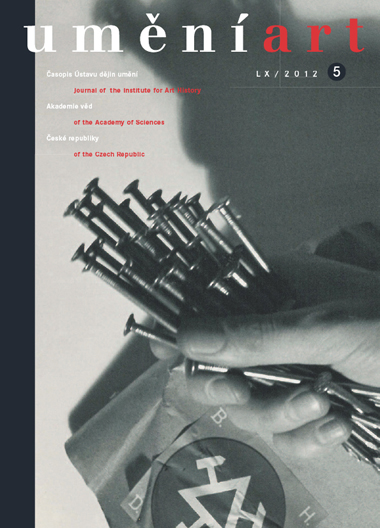Pavel Kalina
Hericiis et leporibus: Giovanni Bellini's St Jerome in Washington and the Idea of the Hermit's Life in Italy and Central Europe in the Early 16th Century
The painting of St Jerome in the National Gallery in Washington from 1505 tied in with a hybrid version of the subject, which fused two iconographic traditions of representing this saint: Jerome as a scholar and Jerome in the landscape. Bellini himself created several paintings of St Jerome during his career as an artist. The painting in Washington is a combination of the version of St Jerome Bellini painted that hands in the National Gallery in London (and is almost identical to his St Jerome hanging in the Uffizi Gallery) and the earlier drawings of his father Jacopo (British Museum). The basic compositional motifs of a cliff and a spring were no doubt intended to represent the setting familiar from Jerome's Lives of the Hermits. One of the new features that appear in this painting is the pair of hares in the centre. According to Augustine's exposition on Psalm 104 (103), we are the hares who are to seek refuge in the rock represented by Christ. The Latin version of the Vulgate, which was translated by St Jerome, leaves out the reference to the hare from the relevant verse in the Psalm. The painting is thus a kind of Augustinian revision of Jerome's translation aimed at transfiguring our inner life. This is a sign that it was created for an educated humanist who also recognised the aesthetic ideal of hermitism. The motif of the rock arch was taken up by Albrecht Dürer (woodcut B. 113, 1512). From there it was adopted by the Master of the Litoměřice Gradual in his illumination of the Stigmatisation of St Francis opening the Czech version of the manuscript of the Lives of the Hermits from 1516. However, the social context of central European depictions of St Francis and St Jerome is very different from that in which Giovanni's original was created. In the Czech context, the motifs drawn from Bellini's work came to form part of the standard iconography of prominent nobles, but they only sponsored the local Franciscan Friars and were not so taken with their ideals that they wished to replicate them in their own lives.
Full-text in the Digital Library of the Czech Academy of Sciences:
https://kramerius.lib.cas.cz/uuid/uuid:edd930fb-7afd-6c7e-f067-e821b510b6de
< back

